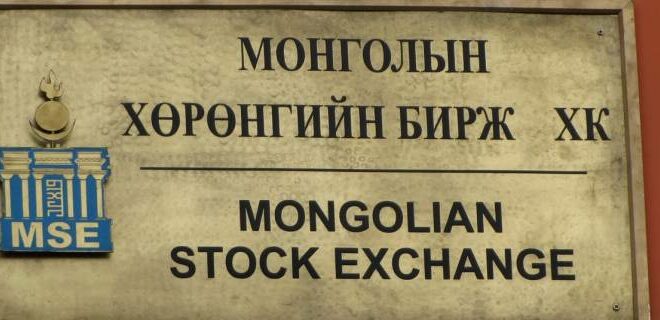Mongolia successfully established a benchmark curve with its $1.5 billion debut bond early Thursday morning, after raking in an astounding $15 billion of orders.
One banker joked that Mongolia has more yaks than people. It is not far from the truth. The landlocked country has a gross domestic product of just $8.5 billion, so orders were roughly twice the size of the economy.
Getting a piece of a frontier credit like this, and one with exposure to China, was certainly part of the attraction. Mongolia is fast-growing — its growth rate in 2011 was about 17.5% — and resource rich.
Previously, the closest thing investors had to Mongolian sovereign paper was through state-owned Development Bank of Mongolia, which had priced a $580 million government-guaranteed bond earlier this year. With a dearth of sovereign paper in Asia, Mongolia’s bond offered a chance to diversify.
“There is little sovereign paper in Asia — aside from the Philippines and Indonesia, and some issuance from Sri Lanka, Pakistan and Vietnam,” said Arthur Lau, head of fixed income for Asia ex-Japan at Pinebridge Investments. “Mongolia offers investors the chance to diversify and it is also an indirect proxy for China’s growth recovery given that Mongolia is commodities rich and China rarely issues dollar debt.”
However, the fact that much of Mongolia’s economy is based on mining and agriculture also leaves it vulnerable to volatility in mineral prices and the occasional extremely severe winter, according to Moody’s, which rates Mongolia B1.
In its report, the ratings agency said that its rating is constrained by the country’s susceptibility to “destabilising boom-bust cycles” — which stem from its undiversified economy and inflationary monetary and fiscal policies.
But there are other problems — aside from the weather — that can shake investor confidence. “Mongolia has gone through quite a few policy changes in recent years.” said Lau. “It seems the government does not have a consistent policy over foreign and infrastructure investment, especially in projects that are related to resources and infrastructure.”
In November, Mongolia’s government took over the country’s railway infrastructure projects. This affected private company Mongolian Mining Corp, which had issued a $600 million bond earlier this year and planned to use the proceeds to fund the construction of a rail link to China, which was expected to help reduce its costs.
According to Lau, the government’s decision to take over the country’s railway projects has since created policy uncertainties for both the private sector and foreign investors. Mongolia has also recently emerged from a banking crisis, and had to be rescued by the IMF.
Demand for long bonds
In any case, these issues did little to dent investor appetite for the bonds. Demand was skewed towards the $1 billion 10-year tranche, which attracted $9 billion of orders. The $500 million five-year tranche attracted over $6 billion worth of demand.
The five-year bonds priced to yield 4.125% and the 10-year bonds priced to yield 5.125%, both at the tight end of final guidance and 37.5bp inside of initial guidance. In secondary, the bonds performed well and rose a point to 1.5 points, as under-allocated accounts scrambled to buy paper. Mongolia’s sovereign bond is also included in major indices, which made them attractive to funds that track the index.
When Development Bank of Mongolia issued its government-guaranteed bond earlier this year, it was said at the time that it would be the main funding vehicle for the sovereign. However, that has clearly changed. Instead, the Mongolian sovereign reaped cost-savings by issuing directly, according to a source.
“There were advantages to issuing from the sovereign level, as opposed to the guarantee, as there was no ambiguity as to whether the guarantee would be enforced,” said the source.
The Development Bank of Mongolia (DBM) 2017s was bid at 4.625% and Mongolia’s new bonds maturing came at 4.125% or 50bp inside of DBM.
The other comparable for Mongolia’s bonds was Sri Lanka’s bonds maturing 2022, which were trading at a yield of about 5%. Mongolia’s 10-year bonds priced at 5.125%, just slightly back of Sri Lanka — an impressive outcome. “Sri Lanka is a $60 billion economy and Mongolia is an $8.5 billion economy, so the fact that it priced 1/8 of a point back of Sri Lanka is pretty impressive,” said the banker.
The bonds saw strong participation from US investors and fund managers. For the five-year tranche, US investors were allocated 40%, European investors 32% and Asian investors 28%. Fund managers were allocated 82%, private banks 7%, banks 5%; and pension funds, insurers and other investors each took 2%.
For the 10-year tranche, US investors were allocated 45%, Asian investors 29% and European investors 26%. By investor type fund managers were allocated 85%, private banks 4%, banks 4%, insurers 2%, pension funds 2% and other investors 3%.
The funds used will go towards funding infrastructure, roads, highways and railway projects. It will not be used for social welfare of budget purposes.
Bank of America Merrill Lynch, Deutsche Bank, HSBC and J.P. Morgan were joint bookrunners.
Away from Mongolia, earlier this week, Amber Circle closed a $1.5 billion dual tranche bond, comprising a $500 million five-year bond and $1 billion 10-year bond, which was guaranteed by China Development Bank through its Hong Kong branch.
Bank of America Merrill Lynch, CCB International, Citi, Deutsche Bank,Goldman Sachs, HSBC, Morgan Stanley, RBS and Standard Chartered were joint bookrunners.
Source: Finance Asia
 Asia Finance News Asia finance news, banking, market analysis, business, Forex, trade, Cryptocurrency as it is happening in Asia. Trusted gateway for Asian financial news.
Asia Finance News Asia finance news, banking, market analysis, business, Forex, trade, Cryptocurrency as it is happening in Asia. Trusted gateway for Asian financial news.





